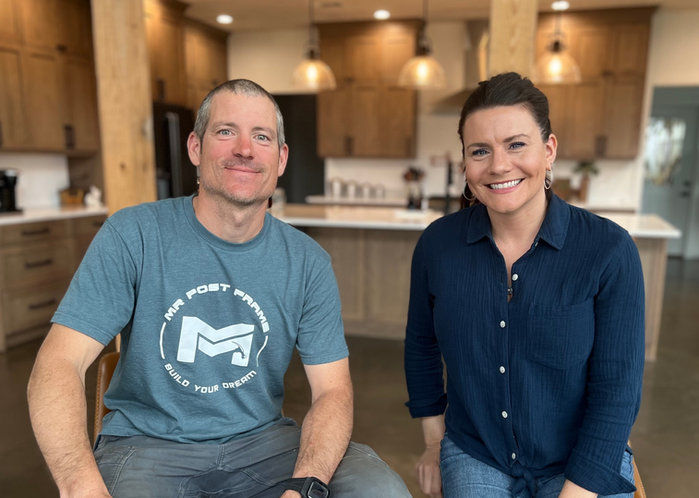Building a Shouse | Framing: Lifting + Plumbing Walls | Part 3
- MR Post Frame

- Nov 8, 2023
- 4 min read
Updated: Dec 19, 2023
In this part we will be going through the process of lifing and plumbing the walls for our shouse build. We already have everything laid out and we are ready to start lifting. We're going to do the first side in three lifts. The other side has three 16-foot wide doors, so it's probably going to take four. We have all of our bracing laid out, all of our bolts; everything's ready to rock and roll. So, we're going to start with the section wall that has four columns. It's really well balanced. When you're thinking about how much should I raise at once, if it's a well-balanced wall, you can lift quite a bit. If it's off balance, you're probably going to want to downsize what you lift. Once we get both sides lifted and braced, we'll build an end wall.

As each section gets lifted, I go through and screw the columns into the brackets. The four outside screws first and then I’ll put the two bolts in. We’ll put the top bolt in first, suck it together, and then tighten. And then when we do that bottom one, we'll back those out, then suck it in and put them back in.
Our truss is gonna get nailed into our corner column on the end space. So we put a little spacer in and angle a board so there is a gap in the column. That way, when we set this truss, we have a little sleeve to set it in. It just keeps that truss from popping out when you get it into place. And it's a lot easier doing this on the ground than up in the air. Once you get that first section done, it is the same process with the rest of that wall and the opposite wall.

After I have the two 80-foot sidewalls all framed up and ready to go, I was ready for the first end wall. I already had all the columns cut and laid out, I just had to lay out all of our girts. When I do this, I just run one screw into each one as I work across this wall, squaring it. That way, if I need to change something, I can just pop that screw out and adjust whatever I need to. It usually works out pretty good, and I don't have to change anything, but I guarantee you if I nail it, then I'm going to have to change something.
Once it's all laid out, I need to go through and square everything up. In this particular case, this is a 60-foot end wall. I will secure them in these brackets with screws on each side so they don't move. Now, I know that my sidewall is straight, so I'll start out grabbing a measurement from the outside edge of the column, to the outside edge of the sidewall column, and I'll continue that measurement up the side, matching it so I know this is straight. Then I will do the same thing from the sidewall to the second one, and then I'll start screwing in my boards as I work across. The boards will move a little bit until you get several of them locked together, so you just have to keep checking. I keep building across, matching my measurement from the edge of the column to the edge of the column and keep checking back to the sidewall to make sure I'm staying consistent. I'll do that all the way across, and if I did my job right, when I take the measurements from that sidewall to my first column, it should match up.

So now that I have this all screwed together, I come up with a plan on how I want to lift this. There are seven columns in this wall, so I'm going to take these three middle ones so that it's a balanced wall that I'll be raising and raise the two outside ones separately.
One thing I want to talk about, which can get confusing, is what I do if the columns aren't perfectly straight. Well most of the time wood is going to have some imperfections. Sometimes they have a little bit of a 'u' shape to them. When that happens, the most important thing is that you want it to be plumb from the bottom to the top and worry less about what is in between. That way, I know overall this column is running plumb and square to each sidewall. These columns are never perfectly straight, and you'll get a little variance through the middle. So just make sure the top and the bottom are what's really important.

We then go through and begin to nail together. You can't nail everything because I still want to lift this up in three pieces. In order to recognize which ones I don’t want to nail, I go through and leave a screw sticking out a little bit. If there's a screw up, we don't nail that. Then when I’m done, I'll go through and lift up the screws that I don't want nailed. We then get the end walls put up, much like the sidewalls. That's gonna be a wrap on lifting up these walls, getting them plumb, and putting our end wall in. We're going to start truss installation next week.
Thank you,
MR Post Frame

Patreon Group:
Interested in tackling your build on your own? If you want to explore the possibility of being your GC or self-building, our Patreon membership is for you! It's a community of like-minded people offering support, discounts, Q/A, and more.






Comments